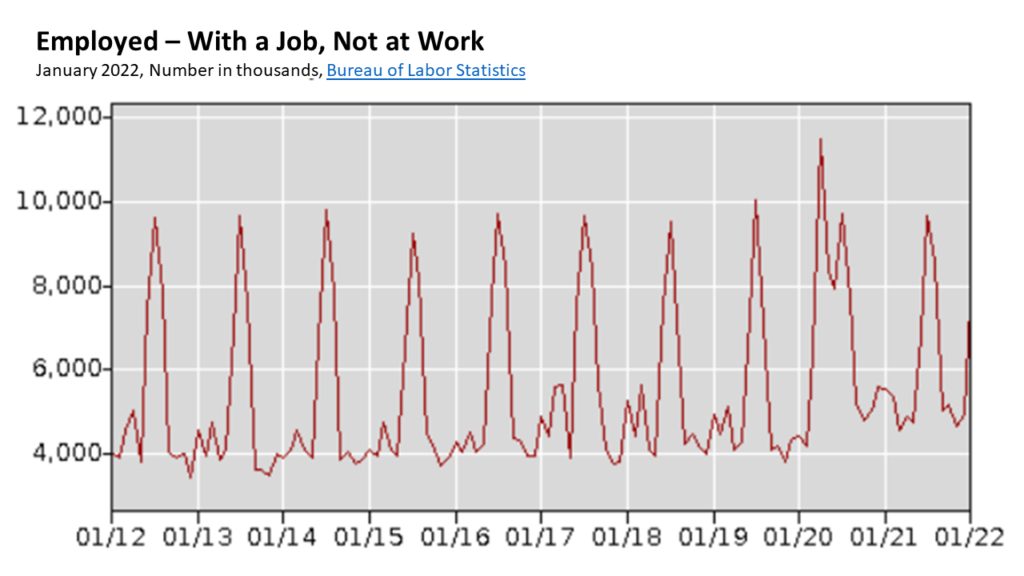The Bureau of Labor Statistics reports that in mid-January US workforce absenteeism surged on January 19-20 (see chart below). Last month had overall rates of absenteeism higher than any time since last summer’s Delta surge and is the worst month for January absenteeism on record with 2 to 3 million more employed people not at work in the first month of the year than in non-pandemic years. January’s 7.6 million employed people not working is, however, much less than the pandemic peak of 11.5 million in April 2020. Average monthly absenteeism in 2019 was about 5.3 million workers.
BLS surveys found extended illness caused more absenteeism than usual. According to Bloomberg, “The 2.3% of employed Americans not at work because they were ill for the entire mid-January jobs survey reference week was the highest such percentage since the Bureau of Labor Statistics started keeping track in 1976, and by far the highest in recent years.” Childcare complications also contributed, especially on January 20 and later. Data is still being crunched for the last week in January, but trends suggest personal illness continued to climb as the cause of not going to work.
I was worried that omicron-related absenteeism would be higher and extend longer. I was especially watching grocery flows, which seemed to experience the most absenteeism (and/or other stresses) between about January 12 and 19. From soft-soundings (even less rigorous than “qualitative data”) it is my impression that many workers were probably infected with mild symptoms and still came to work — sometimes because they perceived they were especially needed. Justin Fox at Bloomberg offers other reasons.
While stock-outs did increase during January’s second-half, grocery flows were well above 80 percent in every category and every region even in the face of strong demand. Another example of profound resilience or another bullet-dodged? Probably some of each.
